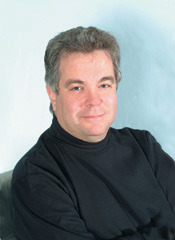
Casinos aren’t the first thing you think about when considering a healthy option. Yet, there has been a surge in interest by guests in “well” rooms, which promote a healthy stay. And they seem to be a hit.
MGM introduced 42 Stay Well rooms in 2012 on the 14th floor (really the 13th floor!) of the main tower. For an extra $30 a night, guests could rent rooms with amenities such as air purifiers; vitamin C-infused showers—which are designed to neutralize chlorine for healthier skin and hair—and circadian lighting systems, which mimic natural light, aiding the body’s internal clock by regulating melatonin production. Other elements include an all-natural mattress, a dawn simulator alarm clock that slowly floods the room with golden light, and a “light therapy” mirror.
The rooms proved to be so popular that the entire 14th floor was converted to Stay Well rooms, a total of 171 rooms, which also includes a common Stay Well Lounge.
Health guru Deepak Chopra, who created the Stay Well concept along with the Delos Company and the Cleveland Clinic, has expanded the concept to include meeting rooms at MGM Grand. Meeting areas include self-cleaning surfaces and a cleaning protocol using hypoallergenic products and tools to neutralize bacteria, acoustic elements that reduce noise from outside the room, ergonomic furniture intended to provide optimal comfort and to prevent stress or injury, a strategically placed hydration station and healthy menu options.
MGM’s approach to selling these rooms has been fresh and innovative, something that every hotelier must keep in mind in these times of Airbnb and Homeaway online services that allow people to rent private rooms, homes and apartments. Hotel rooms not only have to be a bargain, but they have to be unique, as well.
Take the La Reserva Hotel in Paris, which hired Kurt Lagerfeld to design the Chocolate Room, where everything you see is sculpted from chocolate. Also in Paris, how about the James Bond Suite at the Hotel Seven (not 007), a unique mix of futuristic chic with vintage design? Or how about the 1950s Suite at the Victoria Mansion Hotel in Los Alamos, California, complete with a Cadillac bed and car-hood bathroom sink?
In the casino world several years ago, the famous El Cortez was planning on refurbishing its hotel rooms, and conducted a “Design-a-Suite” contest. Four Nevada-licensed design firms were commisioned to create a 600-square-foot suite for $20,000. Urban Design Studio’s “Big Sleep” suite, with a mob theme, won—not surprising, given that the El Cortez was Bugsy Siegel’s first hotel in Las Vegas.
So, it takes imagination to get your occupancy rate up, but it also takes technology these days. And it all has to do with revenue management. This is one of the most critical but least understood aspects of any hotel operation.
Everyone wants to maximize your room revenue, but how about getting the highest possible profit from your best customers, over and above the room rate? In a casino, this can be a double-edged sword. Do you charge the highest possible room rate or do you comp an extra night for a customer who is known to spend lavishly at your spa, retail or food and beverage outlets?
Are your departments talking to one another about all your guests? Are you managing your inventory in a rational manner when you know certain players or groups are coming in?
Are you using revenue management to drive your marketing decisions? And how does your revenue management system interact with OTAs (online travel agents, like Expedia, Hotels.com or Travelocity)?
Keeping your hotel full and creating the most revenue per room is important, but it’s far more complicated in a casino resort than it is in a straight hotel. Not only does it take imagination and unique concepts to fill your hotel rooms, but you also have to be comfortable with the technology that can help you make decisions that benefit both the top and the bottom lines.





